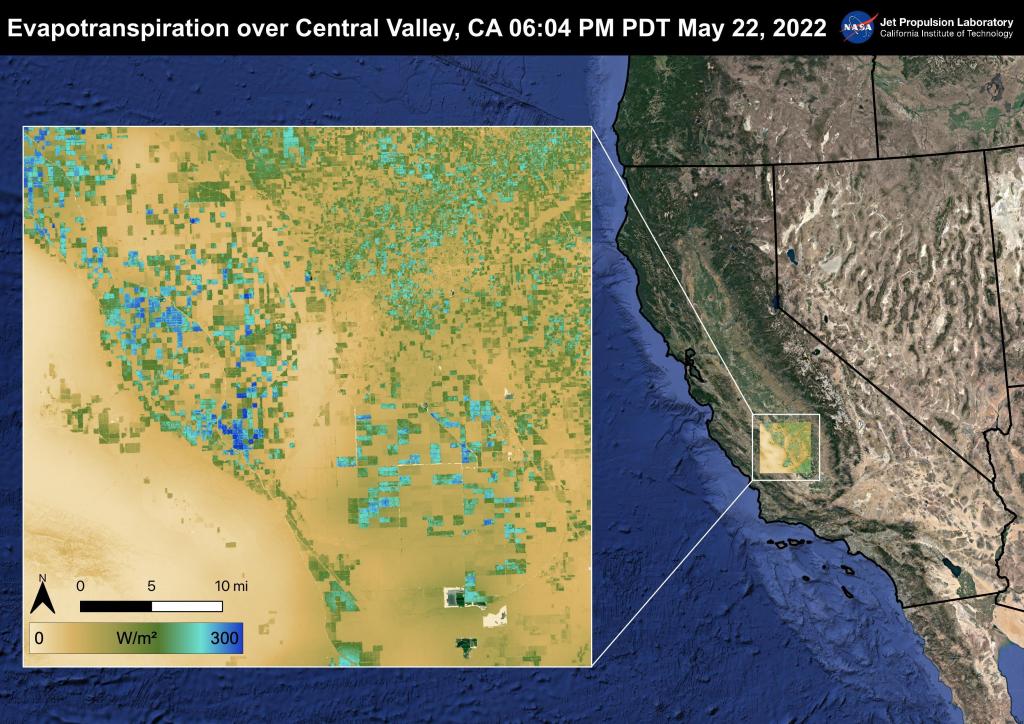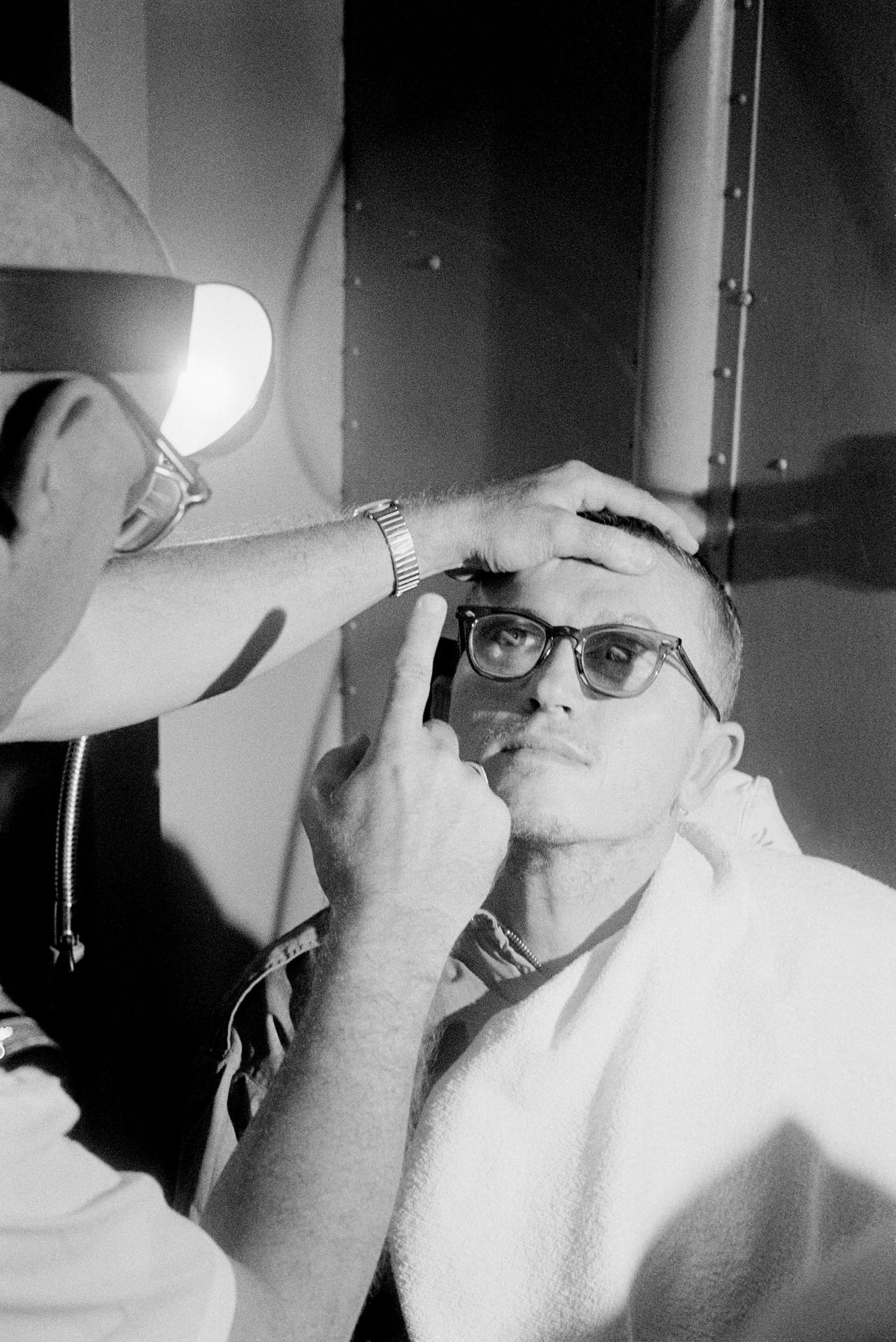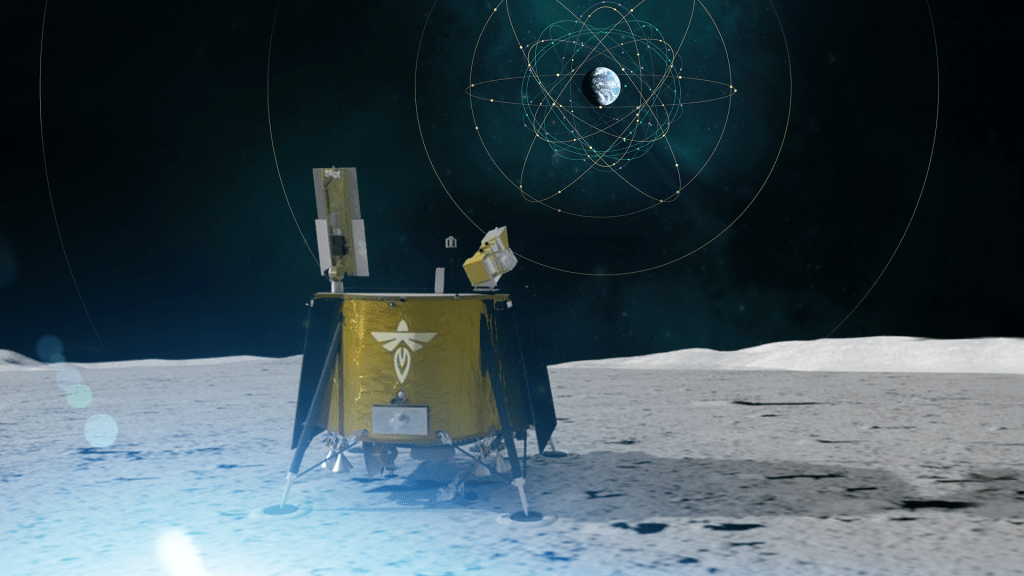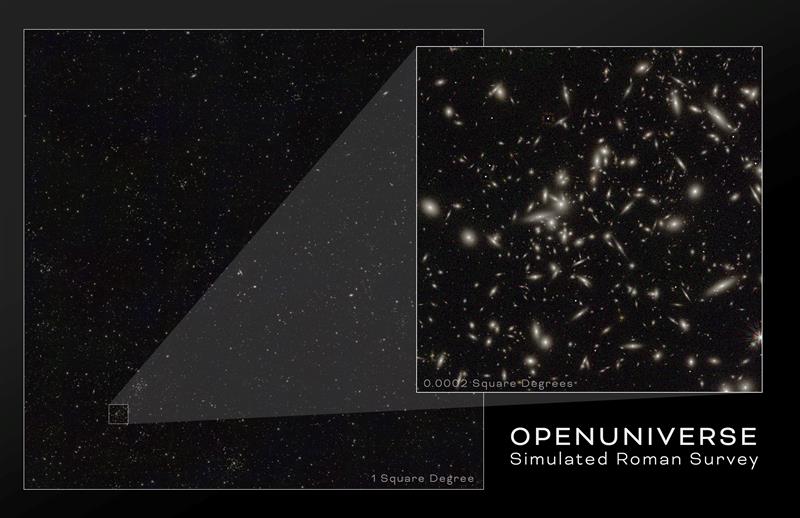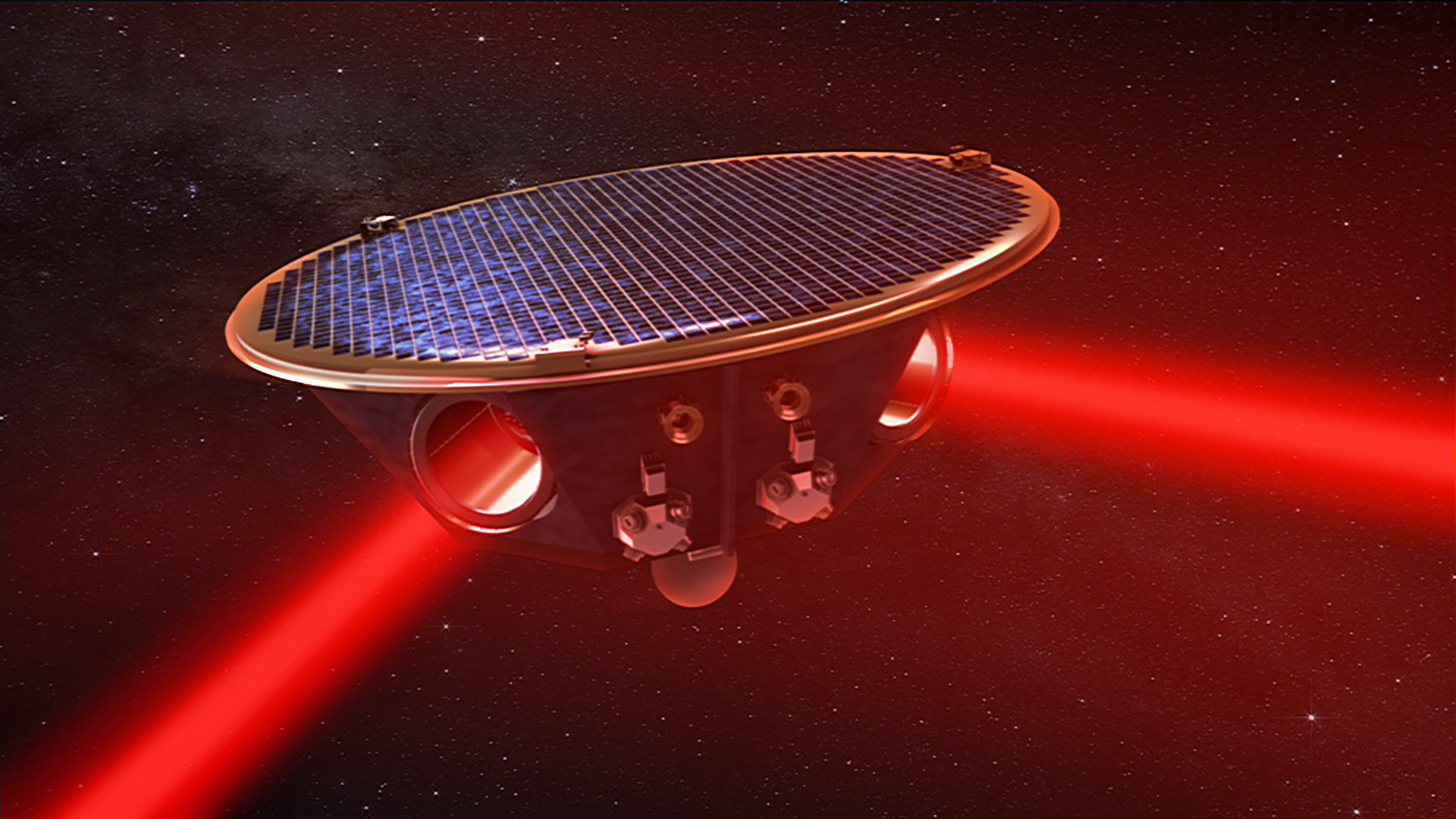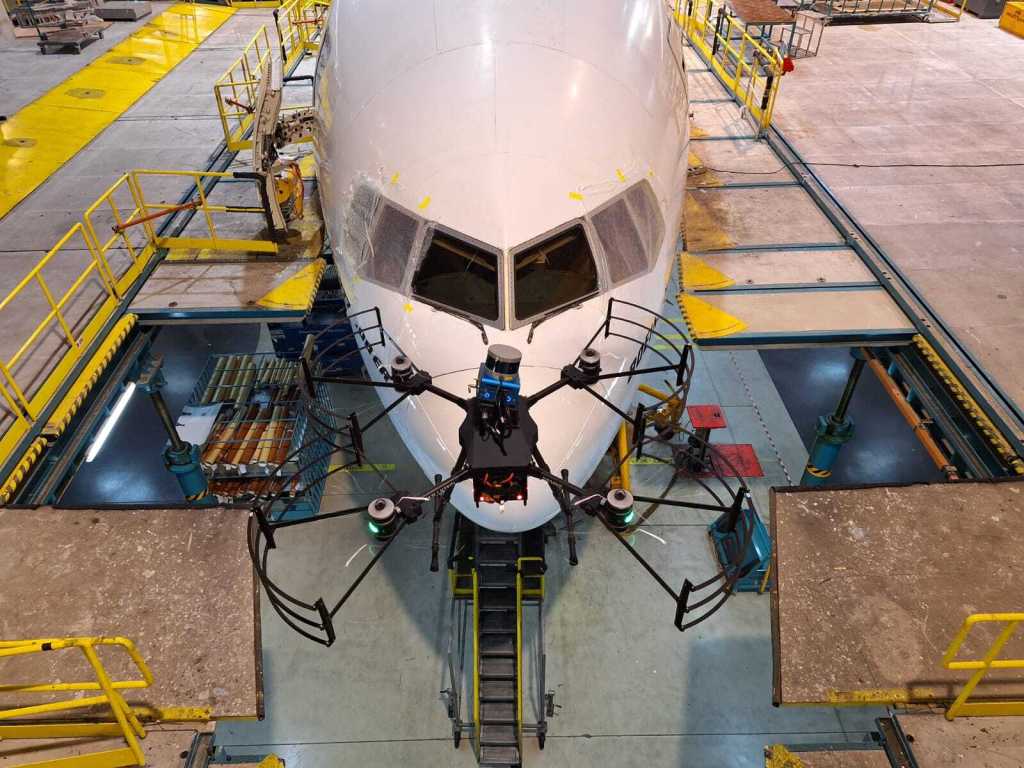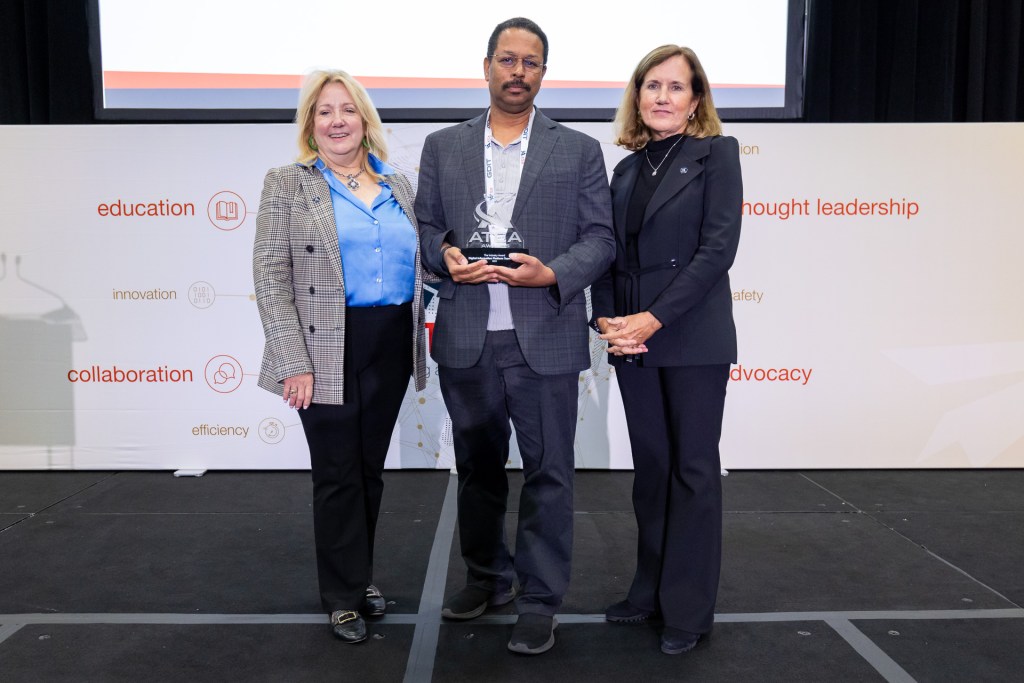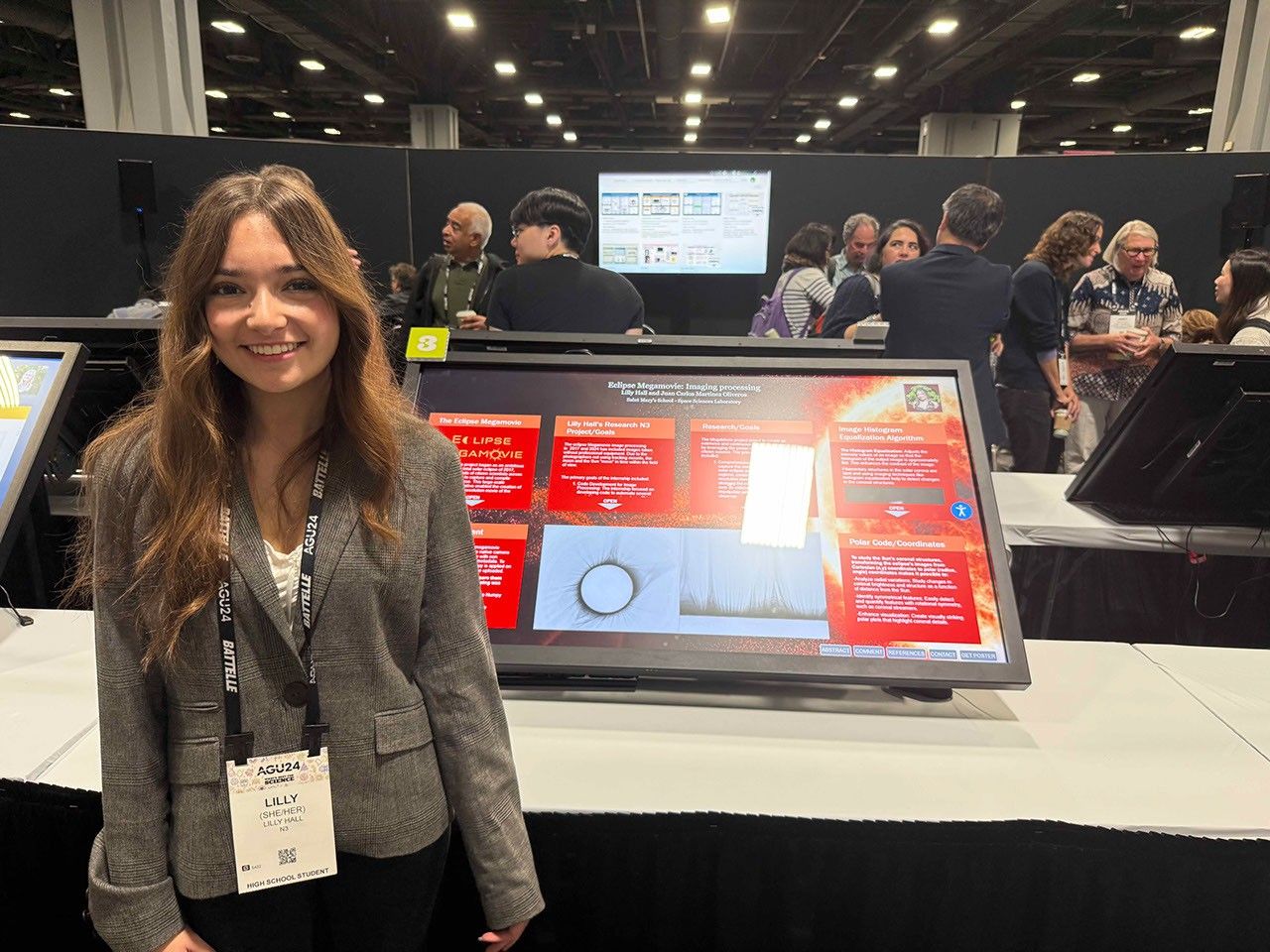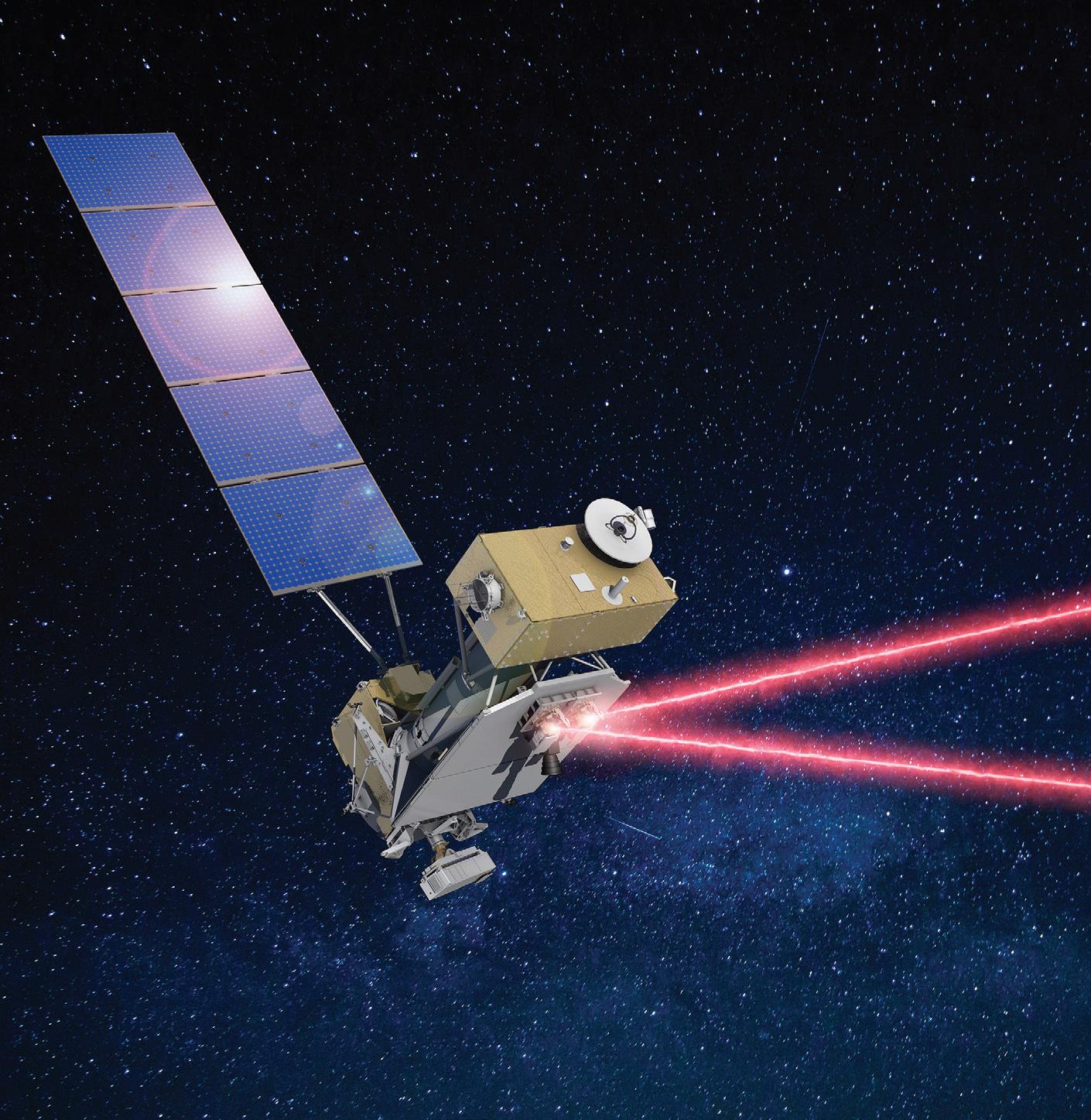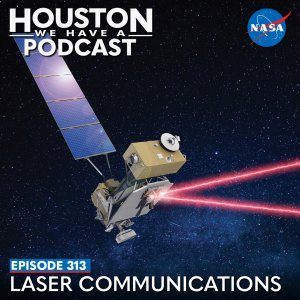
From Earth orbit to the Moon and Mars, explore the world of human spaceflight with NASA each week on the official podcast of the Johnson Space Center in Houston, Texas. Listen to in-depth conversations with the astronauts, scientists and engineers who make it possible.
On episode 313, space communication and navigation expert Jason Mitchell discusses laser communications and the ongoing work to understand what future deep space and near space missions might need. This episode was recorded on October 24, 2023.
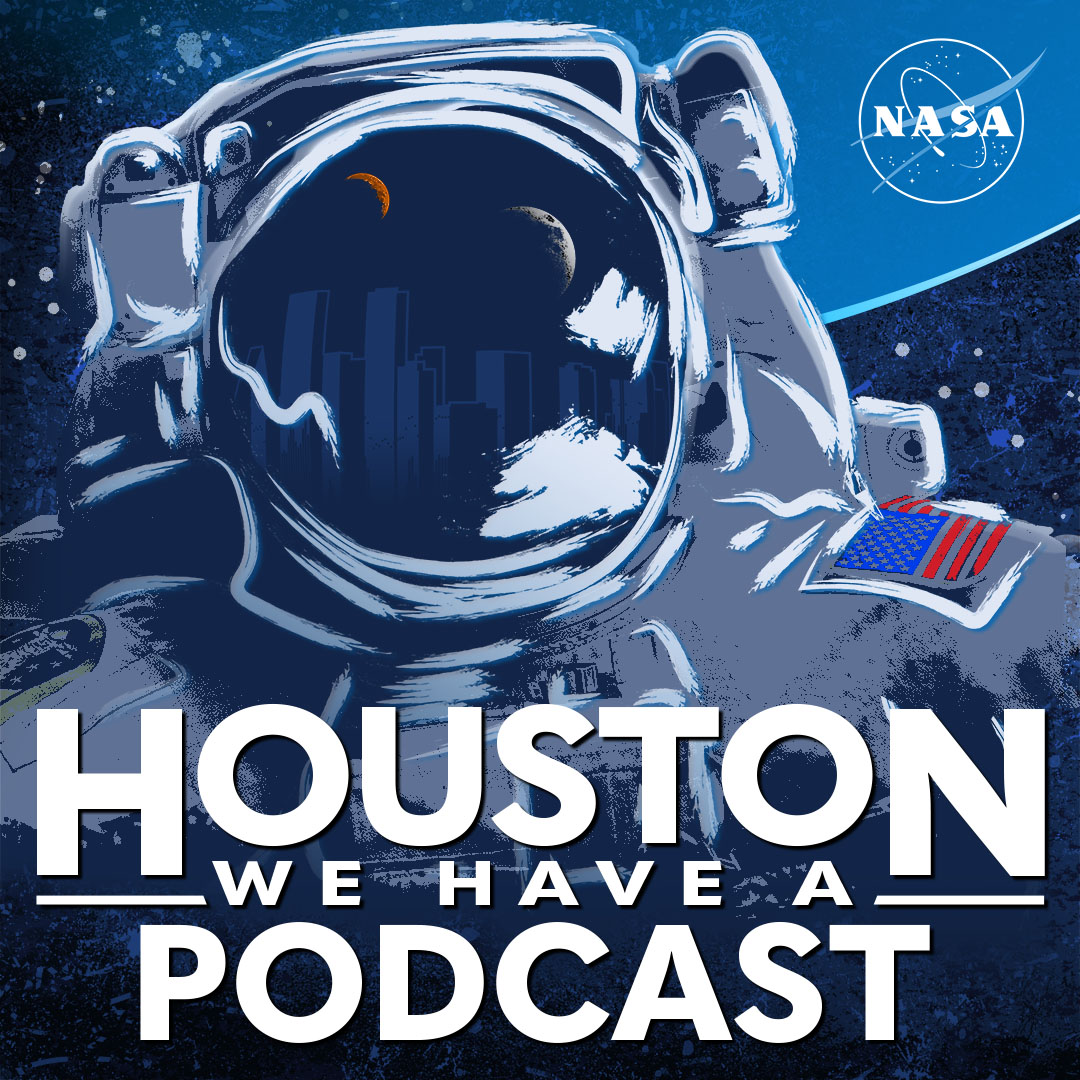
Transcript
Host: (Gary Jordan): Houston, we have a podcast! Welcome to the official podcast of the NASA Johnson Space Center, Episode 313, “Laser Communications.” I’m Gary Jordan, I’ll be your host today. On this podcast, we bring in the experts, scientists, engineers, and astronauts, all to let you know what’s going on in the world of human spaceflight and more. Deep space has recently seen a lot of traffic. Just in the past year, we’ve had experts on this podcast to discuss Orion, OSIRIS-Rex, Lucy, and Psyche, all spacecraft that send data back to Earth from the Deep Space Network. This reliable network has served NASA and other countries’ deep space missions for decades, and with access to space increasing and more space traffic with modern technologies, this means demand for more data. Now the Deep Space Network’s data rates are limited by the method of transmission radio waves. So how can we improve the data rates of deep space communications and near-space communications lasers?
We chatted recently on the podcast with Steve Horowitz about an optical laser communications demonstration planned to be on Orion for Artemis II. This is the deep space vehicle humans will take to and from the Moon. This demonstration is one of several to better understand the needs for an improved network. Laser communications over radio can pack a lot more data in a single transmission. But to make it as robust as possible for any user, you have to have a solid infrastructure on the ground, transmitters and receivers to be able to support the demands of future deep space and near space missions. But what are those demands? That’s what Dr. Jason Mitchell, director of Advanced Communications and Navigation for NASA’s SCaN program, or Space Communications and Navigation, is looking to find out. Jason describes the process for better understanding what future deep space missions will need, and how to best support this future. With that, let’s find out more about laser communications with Jason Mitchell. Enjoy.
[Music]
Host: Jason Mitchell, thank you so much for coming on Houston We Have a Podcast today.
Jason Mitchell: Thank you very much for the invitation. I’m excited to be here.
Host: Yeah, we got a taste of optical communications, laser communications, with Steve Horowitz; got to talk with him a couple of episodes back on O2O. It really gave us a taste, but I think there’s a lot more to this story here. I want to start with you though, Jason, and understanding your background. What got you to where you are? We’re going to be talking about Space Communications and Navigation and then work our way from just this general overview over to optical communications. But what brought you into this world? What sold you on maybe the idea of space or communications, anything like that? Where did it all begin for you, Jason?
Jason Mitchell: Well, I think maybe resonates a lot with your audiences, Star Wars is what brought me in as a kid to interest of space, right? Just seeing that on the screen and thinking about it, that got me motivated. Tried to do well in school. Was moderately successful at that goal. Went to college. My PhD, my graduate research was largely focused on celestial mechanics. So I was interested in how things move in space, and numerical methods to try and predict how those things move around in space. Ultimately, my specific dissertation was related to spacecraft attitude dynamics and control, being able to predict spacecraft attitude, which turns out to be kind of important if you want to do things like laser communication pointing is important. Then I did a Postdoc with the Air Force working on formation flying technologies. So how to get individual spacecraft that might be clustered together to do different interesting kinds of things. That ended up with me migrating to Goddard Space Flight Center where I had a lot of fun working on things like high-altitude GPS for the Magnetospheric Multiscale (MMS) mission, which instantly still has, I think the Guinness Book World Record for highest GPS signal altitude received and used in space. So that was super fun.
I got involved in another sort of experiment called X-Ray Pulsar Navigation. So you may be familiar with that. There was a DARPA program a while back to look at using pulsars for independent navigation, for a GPS-like navigation, that could be used anywhere in the solar system, right? Cause pulsars are visible from everywhere. Whereas GPS satellites are just visible if you’re around the Earth. So then we did that, demonstrated that with the NICER mission. The NICER mission was the Neutron Star Interior Composition Explorer mission, that was an ISS payload. So we did that x-ray navigation demonstration and then I sort of migrated to doing other technology elements in a broader scale at Goddard and then eventually moved to SCaN to do technology development for SCaN.
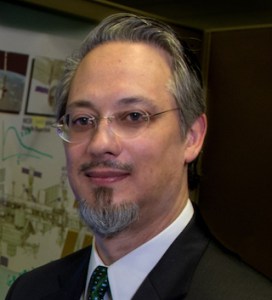
Host: Okay. Yeah. It seems like it got progressively more related to communications navigation, it was a methodical step-by-step part of your career.
[Laughs]
Jason Mitchell: It may seem like that in retrospect.
Host: Yeah.
Jason Mitchell: But it was not entirely a random walk, but you know, something like that.
Host: Yeah. You know what I found interesting, Jason, is you talked about you didn’t do particularly well in school, but what you just mentioned there, each part of your background, of your career, was working on some very complicated stuff. I wonder did you push yourself a little harder to be able to understand some of these complicated things? Maybe driven by your fascination with Star Wars and wanting to enter into a world of space and just pushing yourself. But I mean, you’re talking about some complicated stuff. So how’d you navigate that?
Jason Mitchell: No pun intended, right?
[Laugh]
Host: You see what I did there.
Jason Mitchell: Yeah, there you go. It’s a good lead-in. It was always a challenge for me on the academic side to just sort of get up to speed. So you’re absolutely right. It was really mostly about hard work, right? Putting in the hard work to get that deeper understanding. Fortunately, that focus actually just kind of snowballed. And so it was a, you know, sort of a positive reinforcing habit that once I learned what I needed to do, right? Sometimes it’s about really understanding how you need to learn, just being able to apply that in new situations, and then focus really on getting down to the heart of what are the basics. Because most times, the basics are exactly that. They’re just basics. The rest of it is sort of the dressing that you need to accomplish that basic thing. And that’s where the complexities really get built up. But those are things that are, you know, just like building a Lego, right? You just got a bunch of simple blocks. You just have to put them together in the right shape that you want. And that’s the real complexity, not necessarily the basic fundamental things. Maybe you think about the basic math or fundamental physics of it.
Host: You describe it so seeming seemingly simple, but I believe the way that you got there was exactly as you said, through the hard work. It was the dedication that got you to a point where you finally were able to understand it, grasp it, and you had to push yourself probably along the way to do a lot of these complicated things. I mean, you talked about working with pulsars. That’s an interesting solution to solving navigation problems. How do you find your way through the sky and just finding unique solutions and diving deep into a subject to better understand it? You’ve got to kind of go along with the flow there.
Jason Mitchell: Yeah. And it’s fun. I mean, I think that underscores the whole point. But at least for me, it’s not everybody’s thing, but sort of that increased lifelong learning is sort of one of the things that drives me. I’m very much interested in doing unique things and in particular, things that enable us as humans to do and learn more, right? I mean, I didn’t fall into the science side for the most part. That was not something that resonated with me. But doing the kinds of things that I was interested in helped me enable other things. And so being able to play that role was very satisfying for me.
Host: Very good. Your path took you, like we said interesting ways, but where we were talking about leading was your current role in advanced communication and navigation. And this is within the space communication and navigation. So let’s just help our listeners navigate that and understand what this program is, what your role within that program is. Let’s start with SCaN, Space Communication and Navigation. You touched on a little bit of this in some of the work that you’ve done, but as an organization, can you talk about what SCaN does?
Jason Mitchell: Sure. So SCaN, Space Communication and Navigation program at NASA, it’s located at Headquarters. We’re organizing the mission directorates, it’s within the Space Operations Mission Directorate. The SCaN program is responsible for making sure that NASA missions can meet their objectives. So, whether that objective is exploring a new place, either robotically or with humans, we are tasked to make sure that the data that they need, they want to get back, comes back in the way that they want, right? That they can actually decode and make use of to make those discoveries. And also to provide the ability to make sure they know where they’re going, where they’re at, so they can determine how they’re going to get there, right? So maybe you think about this as sort of like the navigation guidance control part, right? You have to be able to navigate, find out where you’re at so that you can determine where you want to go to, and then guide to that point. So this office, or this program, is responsible for making sure that missions as they go through their design, their concept formulation, all the way through design development, ultimately to launch an execution that they’re able to get all the information they need from the program to be able to accomplish their mission goals.
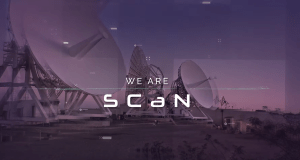
Host: I see. Okay. So let’s take Psyche for example. That’s a recent launch that we just had. It’s a mission that says, “Okay, I’m a spacecraft Psyche. I want to go to this asteroid called Psyche, so I need to know how to get there, and I want to send some very valuable data from deep into space back to Earth.” And that’s where you guys come in and you say, “Okay, here’s the navigation story, and here’s the communication story.” Am I characterizing that correctly?
Jason Mitchell: Yeah, I mean, that’s the high-level overview, right? I think one of the things that sometimes may be glossed over or is sometimes oversimplified is that by and large, particularly for deep space missions, where you don’t have an autonomous navigation capability like GPS available to you, your communication and navigation capability are tied to your communication link, because that’s actually what you’re using to get the basic observations that you’re going to use to determine what your trajectory is, and then ultimately where you’re at, right? Do your orbit determination or your position determination.
Host: Okay. Yeah. All these different missions have different goals and different objectives, but they all are within the infrastructure that you guys build, maintain, and manage, and get feedback on. Everybody wants data. Everybody wants to get to where they’re going. So you are sort of the roadmap for them. You’re the GPS. If I want to get to somewhere locally, I’m going to pull up my phone and go to Google Maps, and I can trust that there’s an infrastructure in place, right? I’m going to trust that there’s GPS that’s going to know where I am and know where I need to go and tell me the path to get there. It’s that version but for space.
Jason Mitchell: Yeah. Yeah. I mean really, if you maybe think about it in a more general term, we would maybe talk about it as an enterprise architecture to be able to execute missions, right? It’s the fundamental infrastructure that you have to have, one of the fundamental infrastructure pieces that you have to have, to be able to execute missions.
Host: And there’s a lot that we rely on. Even today, we’re going to talk about the Deep Space Network. I know there’s the Near Space Network. There are different components that are used every day for space missions that are up in orbit, and of course, deep into space as well. Now, your role in advanced communications, where does that distinction lie within that program?
Jason Mitchell: So the program has division elements. We have network operations. They’re responsible for the network elements and assets that actually operate to deliver these services to missions. We have a development group that supports sort of targeted updates and capability additions to that operations network. And then we have a division, which is my division, which is Advanced Communication and Navigation Technology division. And my job is to look across the mission portfolio for future needs. So I work with our systems engineers, who work with the missions, they’re sort of coming through the formulation pipeline and we look at what kinds of needs they have, and then we sort of evaluate what technologies are available, what the requirements might be, and then we sort of try to put our finger on how we would go from what we have now to what we would need to meet a particular requirement. And we would sort of call that maybe a gap, right? There would be a technology gap that we would have to identify an investment plan so that we could either develop or take an existing technology and mature it enough so that we could close that gap and then make that capability available.
Host: Well, this is going to lead very nicely into our discussion about optical cause I know that’s probably one of the things you’re working on most. So optical we’re going to lead to, right? This is one of those advanced things. This is one of those capabilities that a lot of different spacecraft and a lot of researchers are looking at because of its capabilities. But let’s talk about the infrastructure now. So we have satellites. We have these capabilities, ground lines, all communication systems in place right now, communicating with spacecraft and deep space and low-Earth orbit. All different areas within space. Now when we try to characterize that Deep Space Network, Near Space Network, how do you typically try to characterize the network that you currently have?
Jason Mitchell: It’s a challenge. So we draw. So we sort of have this imaginary distance choice that we talk about things that are, you know, two million miles away and less as sort of Earth vicinity. And then we’ll treat that boundary as everything outside of that is, we would call that deep space. So that gives us a little bit of wiggle room with the Moon, right? So there’s some overlap there because you could potentially have non-DSN assets, right? Other Earth-based assets, antennas, supporting the Moon. In fact, certainly, other space agencies, and commercial entities are actually onboard to support sort of the overall Artemis view about how we’ll execute the remainder of Artemis and beyond Artemis.
But we typically focus on the near-Earth network as being those assets that support sort of LEO. And one of the things that our program also does, in addition to the Deep Space Network, we also operate the TDRS satellite constellation, right? The Tracking and Data Relay system, which is the geosynchronous orbiting number of satellites gives you 360-degree, 24/7 coverage in the radio frequency spectrum so you can get data from anywhere you want below the constellation. So for example, ISS is a huge user of that. During the Shuttle days, Shuttle was a huge user of that. I mean, in fact, that was sort of part of the reason for TDRS to support Shuttle, right? And those capabilities as a build-out for ISS went.
Then for the deep space side, you know, deep space is differentiated from that in that the antennas are much larger usually, right? So the 34 and 70-meter antennas at the different locations, Goldstone, Madrid, and Canberra are the three primary DSN sites. And they receive their data, you know, in whatever band is appropriate for the mission, right? I mean, this is one of the things that we focus on, is that there’s no one-stop-shop solution for everybody. That’s why we work with the missions to make sure that we can meet their need, because they may have some particular quirk that means, well, we would ordinarily do this for this kind of mission, but because you have this unique need, this unique mission need, we would engineer a solution for you like this. And so that’s why we have this sort of array—no pun intended—this array of assets available to meet all those kinds of mission needs.
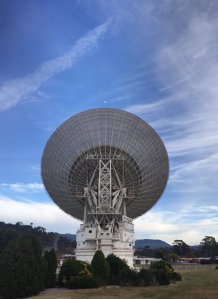
Host: I loved all the puns that we’re throwing in here. It’s actually kind of fun. Now radio frequency, right? So when you talk about a lot of what we have now, you talk about the different assets that we have in place in order to support all of these different missions. Am I reading this right, in that all of them use radio frequency?
Jason Mitchell: Correct.
Host: Okay. So what are the pros and what are the cons of using RF for space communications?
Jason Mitchell: Well, pros are certainly that it’s what we’ve used up to this point, right? It’s extremely flexible. It’s highly available. It’s well understood. It’s sort of easy to implement. I mean, I think one of the best things is that all of the engineering is all clear, right? There’s no limited ambiguity, except when you’re trying to push the boundaries of the envelope, right? If you’re really trying to push up to high frequencies or if you’re trying to do really novel or nifty things. What you need to do for space is all well known. And that’s really attractive for space users, right? Because they don’t want risk in their communication system. They want risk in what it’s going to take for them to execute their particular mission, right? Maybe their risk is the particular instrument design, right? Maybe it’s a novel new instrument design. They’re not quite sure if it’s going to work, right? Or maybe they won’t get enough data, or something like that from their particular instrument. They don’t want infrastructure items to be the risk for them to take on, right? And so that’s sort of the focus there.
Host: I see. What’s nice about the radio frequency infrastructure, you talked about one of the pros is just the fact that we’ve been using it for so long, right? You mentioned TDRS during Shuttle, RF goes back even before that. There are these ground stations all over the Earth that support all of these missions. So as an example, to help us to understand, let’s just say there’s a deep space mission, and it’s sending a signal, and it’s the ground station in Canberra that receives that signal. But it’s the mission control team in JPL that needs to receive that signal. Now it goes from space to the ground station in Canberra. How does it get from Australia over to California?
Jason Mitchell: Yeah. So that’s where we leverage all of the existing terrestrial networking capability, right? We bundle that data over the traditional backhaul that we lease from various providers that connect to all the sites. And then that data is routed back to the Deep Space Operations Center, or complex, not just because it has the acronym DSOC doesn’t mean that. There are only so many short acronyms, right? So you’re bound to have some collisions here, and that that’s one of them, that’s the collisions. And so at that routing, and again, that’s located at JPL, so once that data comes in from wherever, whether it was Canberra or whether it’s Madrid or Goldstone, it would be routed there. It would be sort of packaged and then with whatever agreements for traditional terrestrial backhaul, that data would then be delivered to the appropriate operation center. Whether it was a science processing center, or whether it was a mission operation center. That’s how that data would be delivered.
Host: Yeah. So this is sort of setting the tone for how data is received, how data is sent. It goes through these channels. These well-constructed, well-thought-out channels to get from the spacecraft to the end user and everything in between, managed by SCaN. Now, this leads to your role, right? In advanced communications is understanding what comes next. We’ve had RF, we’ve had the Near Space Network, Deep Space Network. We’ve been using these assets. Let’s figure out what comes next. And the conversation that we’re leading to Jason, is lasers, is optical communication. We’ve had a taste of this on the podcast before. But in the broadest sense, just to help listeners with an overview of what laser communications, what optical communications is, what are we looking at here?
Jason Mitchell: Well so, back to the notion of RF, right? As you proceed through the RF spectrum, as you go up in increasing frequency, we’re all sort of very familiar with the sort of what we would call S-band frequencies, right? That’s roughly the gigahertz area where we’re all connected with Wi-Fi. Like right now many of us are, whether we’re aware of it or not, we’re probably connected to some Wi-Fi thing somewhere, exchanging data. So to get more data, you just proceed up the frequency through the spectrum, right? You go to higher and maybe you go from S- to X-band, right? Increase frequency. And if you want even more data, maybe you go from X- to K- or Ka-band or Ku-band, you’re increasing in frequency. Now you’re up into the tens of gigahertz in terms of frequency. And if you really want to push RF, you can go up into the W- and V-bands and get even more data. But the challenge there is that you start to have difficulty with weather transmitting directly to Earth, right? So you start to have weather effects. And like, well, if you’re going to have weather effects, why don’t we just sweep all the way up, sweep out of the gigahertz range, and sweep into the terahertz range? And that’s where we get to where we’re at now, which is the near-infrared, sort of 1550 nanometer wavelength. We sort of generally call that an Optical C-band. And that’s interesting because that’s the target of terrestrial Optical networking, right? I mean, all the back—we’re all data-hungry, right? I mean, I’m a voracious data user, so all that data on Earth is already pumped with lasers through fibers, right?
So the benefit there is that we’re sort of just lifting the network up, right? We’re bringing that into space, making it usable in space, ruggedized for space. But instead of a fiber carrying the medium, we’re doing it through free space, right? We’re doing it just a free space laser communication. Now, it’s much easier to do space-to-space lengths with lasers, because there’s no atmosphere to impact the signal, nothing to impact the light that’s being transmitted. When you transmit to Earth, the atmosphere can distort the signal. And of course, just like with the higher frequency RF, if you have rain clouds and things like that, it can obstruct your ability to receive your data, right? It can block your data. So that’s where lots of things come into play about how you predict weather, how you assess where locations to receive the optical light should be. Ultimately it’s just that we’re moving up into, you know, for a non-technical phrase, just a faster wiggle, right? I mean, we’re wiggling faster so we can pack more data into the wiggles.
Host: I see, yeah. I’m imagining the squiggly lines, the wiggles as you’re describing it. Okay, so it sounds great, right? You jam more data into a single transmission. I think there are a lot of researchers, there’s a lot of individuals out there who would love this capability for space missions. More data means you don’t have to be so choosy. It means that during a mission, you can get more real-time data versus data that you have to store on board. We’ve talked a couple of times on this podcast about Artemis I and Orion, there was a lot that Orion was able to transmit through the Deep Space Network for real-time data. But there was so much on board that a lot of it just had to be stored and gathered later because it couldn’t all transmit through space. So this is definitely a capability that a lot of people would be interested in. Now, you said a couple of cons, though, right? So you said weather, right? So we talked about the ground infrastructure, we talked about the capabilities on the ground for the Deep Space Network, Near Space Network? And of course, in orbit some of the assets there, we talked about TDRS. So what infrastructure do we currently have in place for supporting optical?
Jason Mitchell: So right now, we have no, I wouldn’t characterize it—for example, with respect to the existing networks that we support, Deep Space Network and the Near Space Network—I would not characterize the stations that we have now, ground stations we have now as operational, even though they’re operating, right? I think you have to be careful about that term. But for the infrastructure that we have right now, we have two Optical Ground Stations, one at Table Mountain Facility that’s operated by our JPL partners. And we have another station, at Haleakalā in Hawaii. So those are sort of well-placed because you point out, as we mentioned, the weather becomes an issue.
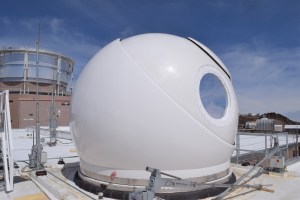
Well, if you’re able to get up above the weather, that’s actually super. Because then you don’t have to worry about it if you’re above it. Now Table Mountain’s not quite high enough to do that. You still have effects. And it also turns out that Table Mountain is sort of in the flight path for LAX. And so that is another set of infrastructure elements that we have to have to make sure that we’re meeting safety requirements, right? You don’t want anyone to inadvertently intersect your beam, although, from the perspective of our choice of the 1550 nanometers, that’s an eye-safe range, right? That’s again, another US industry telecom standard that we try to focus on specifically for those safety reasons. And we’re not broadcasting it high enough, transmitting it high enough power for that to be really a problem for aircraft.
So there are infrastructure elements in place. I would characterize them as experimental because what we’re really trying to understand how to do with the sort of the portfolio of risk reduction activities for space users we have, is to understand what it takes to get to operations. I think it’s one thing to simply develop a technology, test it, and say, “Yep, we met,” you know, if you’re familiar with the technology readiness levels, if you think about TRL6 where you say, “Okay, it’s ready to go into a mission.” We’re, we’re not really done there when it comes to infusion, when you’re talking about something like infrastructure, we really have to go through all the challenges of learning what does it take to make it operational? Sure, if you think about it as a lab exercise, it might take 10 or 15 people to do the demonstration, get the data that you want, and it might take, six or eight hours to be able to do a short data collection run. You really don’t want that, right? Because you want to be able to support multiple missions. You want to be able to turn over really quickly. You don’t want to have to burn out operators operating long hours and potentially isolated areas because there are human impacts on that operation. So this is the way we’re trying to execute this portfolio is to really understand what it’s going to take from these experimental ground stations to enable this as an operational capability.
Host: Very important distinction, right? We talked about the infrastructure and what’s in place and this is what you’re doing exactly, is trying to figure out, okay, what comes next? And of course, you don’t want to gut the current infrastructure, which works so well, to replace it with something that you’re right, we still need to figure out, we still need to understand what these operations are like. And so you talked about technology demonstrations. We mentioned one, where we talked with Steve Horowitz about O2O and we can certainly investigate that one again. But you have these spacecraft that are loaded with optical communications as a technology demonstration to do, I think exactly what you’re sitting out to do is, hey, let’s just see how this works. Let’s see what we need, what the capabilities are, what the users are requesting in terms of data transmission. And we have a couple of examples already in space and going up soon. In fact, one of them is Psyche, right? I think Psyche was loaded with an optical capability.
We have one that’s going to the station very soon, ILLUMA-T. we could talk about O2O. can you talk about some of these technology demonstrations for optical comms and what you hope to accomplish by having several optical communications technology demonstrations on several different missions, in several areas of space, deep space, near space, everything in between? So what’s the plan here?
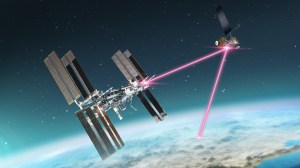
Jason Mitchell: Well, you just hit the nail on the head, actually, right? We have a diverse user set that we have to support, and they operate everywhere. They literally operate anywhere and everywhere that they could go. And so the way we’ve constructed—and I’ll sort of use this term sort of “risk burn down” right? Our goal is to burn down all the risk so that a future user doesn’t have to accept any additional risk, right? Again, back to the notion of you don’t want to take risk on a mission on your infrastructure, right? Unless you’re specifically trying to do something new that you couldn’t do without that. And that’s sort of what we’re doing here. And the portfolio goes from low-Earth orbit to GEO relay to the sort of cis-lunar and lunar environment, which instantly that was the feasibility piece, the LLCD, the Lunar Laser Communication Demonstration way back in 2013 on the LADEE mission. We demonstrated that you could get an optical link from the Moon at about 622 megabits a second. Then DSOC pushes that out to beyond the Moon, right?
That DSOC is what are we going to do for high-rate communication, in particular in the focus of the Moon to Mars objectives, right? If we want to be able to really think about exploring more, we really have to make sure that we understand what it’s going to take to have high-rate capability. And I don’t just mean high-rate capability as return data. If we’re going to have humans, humans have to be connected to home, right? I mean, you think this is maybe sometimes something that’s glossed over or not talked about, or something like that. You absolutely need to make sure that if there’s an issue on board the spacecraft with the crew, and it’s a medical thing, you have to be able to, for example, maybe they have a portable small X-ray or CT scan capability. That’s a lot of data you’ve got to get back and you have to have that pipe to do it. But you also want to make sure that you can send them a lot of data because you like to make sure that they remain connected to home, feel connected to home, and don’t feel isolated during that long journey. And so that’s part of the reason why we’re doing this now with DSOC, is so that we can understand what the link characteristics are for that context, for that use case, and work through it, and then think how we’re going to do that, how we’re going to expand on that to support the real exploration needed for Mars.
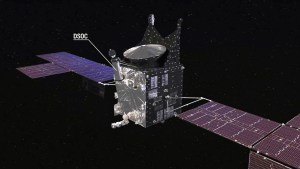
And in fact, if you think about it, if you really want to pick a landing site for Mars, you kind of need to have a really high-resolution map of the surface. If you were going to say, “Roll the dice and look at the entire planet to find the best place you would want to go to,” well then potentially, you’d have to map the entire surface. And this is one of the things where as an early implementation, you could potentially return substantially more data and have a substantial risk reduction to your site selection for visitation, than if you didn’t, if you had to wait, right? It’s pretty rare that you could get something that could move your schedule to the left, right? Usually schedule often moves to the right, right? Takes longer. But this is something that for the deep space side, could actually move things in, right?
From the near-Earth perspective, I’ll mention one other demonstration we did. We did something called TBIRD, which is the terabyte infrared delivery payload that was on a small sat demonstration. And that hit 200 gigabits a second direct to Earth. It was in a Sun-synchronous orbit, so it was about a five-minute pass, twice a day from Table Mountain. In a nighttime pass, we managed to accomplish almost a five-terabyte transfer in just that single pass. So that was critical, and I suspect that still, will be a record-setting, downlink from a space link, from a LEO user.
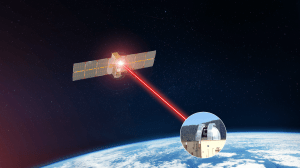
Host: That’s huge. Yeah you’re talking about huge amounts of data. So to drill down just a bit more, when you talk about supporting users and from your perspective, within the organization of SCaN and how best to support that, what will that from your end, inform? Will it inform ground stations? Will it inform servers and how many servers to buy to be able to handle such data or staffing concerns? From a practical sense, in order to support operations, are some of the things that you are toying with in your mind say, “Okay, what does the future look like and how can I best prepare for it?”
Jason Mitchell: In short, yes.
[Laughs]
Host: All of it.
Jason Mitchell: Yeah, mean, it really is because we’re really shifting. It’s not just a shift in frequency to really high frequency capability. It really is a change in the way we would potentially operate. Because if you can get 200 gigabits a second, or nearly five terabytes of data down in a single pass from a small satellite, right? I mean a 12U satellite was this demo. The payload, the TBIRD payload itself was only about 3U in size, right? So it’s pretty tiny. That sort of means, uh oh, what can I do that I couldn’t do before? And what is the impact on the entire chain, right? And I say chain because I immediately start to think about not just the things that we need to do internally, as I mentioned before about the sort of how does that change the operations? What does it mean? But it also extends to supply chain, right? To commercial availability of pieces that we would integrate together, right?
The way I see technology moving forward to be really successful, we have to do the things that are critical for our missions that are mission-unique. If it’s not unique, then we just procure it, right? And then if we do something that’s unique, we have to make sure that we transfer it to industry so that we can build industry capability to support that more so going forward, right? And then we can focus on only the unique mission needs that we have to invest in, because we’ll know we’ll have done enough risk reduction that commercial can pick it up and provide that as a capability. And the exciting thing now is that there’s such commercial capability that it’s not clear to me at this stage what things will look like in 10 years, maybe not even what things will look like in five years, right? If we’re…I should say it differently. When we’re successful with our risk mitigation, our risk reduction portfolio, that will be transition to industry and who knows what the capabilities will be once we’re able to do that. I mean, that’s something I’m really looking forward to and that’s a little bit of a wild card, right? It could be, to your point about sort of sizing servers, like maybe it’s all just a cloud service at some point in 10 years, and you buy it from whatever your cloud provider is, and they say, “Well, you don’t have to care about how your data comes and goes, this is just what you need to do for your spacecraft point here when you’re ready to go and turn on and we’ll get the data to your ops center.” Pretty magical.
Host: Yeah, magical. And I’m starting to get a sense of the difficulty of trying to—I mean, what you’re doing here, Jason, is predicting the future, right? So if you make the wrong investment, then of course, if you make an investment to supply a capability that delivers data to all these end users, but then there’s already commercial infrastructure in place, well, then that’s a wrong decision, right? So you have to understand what is out there and what everybody needs, right? There might be an end user that wants like terabytes of data instantly as soon as they receive it from the spacecraft. So do you set up a unique line to get it from that ground station receiver on the optical end over to the end user? Or is there a commercial infrastructure in place that maybe you can rely on and they could just purchase or lease services. This is sort of what you’re going for. What from the SCaN perspective do we need to procure and invest in? And what is the total demands that may drive a whole economy that may support it for us and finding that balance? This is the world you live in.
[Laughs]
Jason Mitchell: Right. So if I had an infinite prognostication engine, this would all be easy, but I only have a very finite prognostication engine. So the good thing is that we have a very strong team in SCaN that is thinking sort of very broadly about this. I mentioned earlier TDRS, so just as an example of how we’re sort of trying to work all this out as we separate the technology development from what might be seen as just maturation or evolution of our existing service capability, right? In SCaN, one of the things that I mentioned earlier, I mentioned TDRS, so that’s aging, right? And that will probably age out before everyone would like to see it go, right? That’s just a fact of life. There are no plans to replenish TDRS. So they’ll fly out, they’ll do their useful lifetime and then that will be it.
To mitigate that, there’s a project inside SCAN called Communications Services Project and its job is to engage commercial industry, evaluate their capabilities to provide TDRS-like services so that we could potentially have users that have relied on TDRS in the past be able to just procure services. Because we are working with industry to mature those capabilities to reach that state. And so that’s the kind of thing that we’re working through to address exactly what you asked about. Well, maybe you just get it from a service provider, right? Bringing that commercial capability up to speed so that we are actually giving them more direct requirements, right? I mean, it’s a little bit challenging for us because we’re sort of a challenging user cause we have unique mission requirements often. Again, I mentioned that specifically to meet some particular science or exploration goal, whereas a commercial provider would typically just say, “Well, here’s our spec sheet. You know, this is what you’re going to get.” We’re working with them to try and expand that capability and that’s sort of just one element of that evolution.
As we work also through tech transfers, you know, we do broad-area, broad-agency announcements that engage the commercial community and RFIs to test out ideas and see what things could come back so that we may, you know, write a procurement for something, so that we could address how we would infuse that procurement into executing a mission. So it’s the goal of SCaN to make sure that we’re evolving to serve our existing users, but also evolve to meet our future user needs, which is why it’s important for us to continuously engage them and get an idea on how is that horizon receding, right? Does it recede to a hard wall that we couldn’t meet because the data needs become so high. I mean, I think we’re already seeing missions that are targeting, you know, tens of terabytes or more a day, right? So at some point, we’ll transition to missions that want petabytes of data and we have to be prepared at least with a plan about how we would accomplish that. And that’s sort of how we work as a team inside SCaN to make that happen.
Host: That is a tough job. You know, as you were talking, I was thinking about just what the investment that it was made in the beginning with TDRS and with other assets to enable something like an RF network that we’ve seen with the Near Space Network, Deep Space Network. And how many users have been using these assets for as long as they have. I would dare to say, and I wonder if you’re observing the same thing, that it was because of those investments that drew up the demand for the services, so that now when we’re in a period where we’re evaluating what the future looks like, we could consider commercial not because what we did by any sense was wasteful. It was because it was necessary to drive up the demand to be where we are right now, to have this option where we can consider commercial because there is so much demand out there that there could be a viable business model around space communications. Perhaps that’s something that can trend over time, but it’s because of the investments that have been made over time by NASA, by other organizations, to get us where we are today.
Jason Mitchell: Yeah, I agree. I mean, maybe to put a broader point on, it’s sort of like a field of dream scenario, right? If you build it, it’ll come. The challenge is do you have the mission requirement that says you need to build this to execute the mission, right? This is the chicken and the egg challenge of reaching for and attaining the future that people, or at least the missions that we see coming, will have to have to meet their needs, right? And so I think that’s the difficulty, right? The finite prognostication capability. The swiftness with which commercial was moving. Because as you rightly point out, there are business cases that close that are providing services that mimic what we have done because of that draw up, right? And I see what we’re doing with the current risk mitigation portfolio for optical right now as sort of prepped for that next generation draw up of what that will mean.
From the Moon to Mars objectives targets for SCaN sort of being responsible for providing infrastructure for what a post-Artemis future would look like. You know, you hear terms like industrial utilization of the lunar surface, right? I mean, that’s kind of a scary thing, because we don’t really have that many assets at the Moon and certainly not what you would need to support industrial utilization. Like if you think about what, for example, what three d printing for houses kinds of things do here, right? Maybe you want to have some position capability at the Moon where you can tell where anything is to within a handful of centimeters on the Moon so that you could do appropriate control to do things like automated road building or automated house building or shelter building. And maybe house is a wrong term to use for the Moon, but some shelter, shelter building. That’s a heavy lift, but it’s not one that is without parallel. We did it here terrestrially. I think the terrestrial benefit has been undeniable, right? I’m thinking specifically about GPS here, right? I think the impact for that national investment is maybe not immeasurable, but it’s a really big number. We all know that if you turn it off, people get cranky.
So you want to keep it going. And it’s entirely possible that as we make these investments for the post-Artemis future, for an industrial utilization of the Moon, and by the way, a context that we would leverage to understand what we really need to do for Mars exploration, I think there’s a lot of business cases that close for that to be able to provide services to users as that market would grow. I mean, we would model it much like we’ve done with our terrestrial services, right? We would do the things that we need to do to meet our mission requirements, transition to technology and the capability to industry, look to procure more capability as we grow to the point where we would have, you know, commercially owned and operated things, and we would just be a purchaser of service, much like we lease lines for fiber to be able to do backhaul here on Earth.
Host: So that’s a big timescale that you’re thinking of, Jason. You have to think about the near future. What can we expect in the next 10 years, 20 years? You’re thinking about Mars, you’re thinking about, you said post-Artemis, you know, this is a time period on decades into the future. And so when you gather your team and you start performing this work, how do you try to balance the immediate need? You talked about timescales of whatever capability we may need, maybe it’s something we need to invest in now because it will take years to build up that capability. Where are your priorities now then looking at least when we’re talking here in late ‘23?
Jason Mitchell: Well, so this is an excellent question, right? Because this is the challenge of the unknown future. There’s a Frank Herbert quote from Dune of something about the concept of progress exists to insulate us from the terrors of the future. Something along those lines, right? But it’s really a challenge. It takes a lot of focused thinking and a lot of customer engagement, right? At heart, SCaN as a service provider to users. And so we have to continuously engage our users. Now, our users actually have the really long timescale. I’m thinking specifically about Artemis with its goals, the Moon to Mars Architecture objectives, which with its stated goals, and then the Science Mission Directorate for their science goals. And the science side has the surveys that drive them, right? So they’re looking at the next 10 years with a peak to the follow on for what could be important.
So we actually have a lot of data about what the potential futures are, right? As you pointed out earlier, you can’t just pick one, right? That’s the danger of a bad investment. And then you can’t react, right? So you have to sort of keep your options open. So that’s why we look at a number of things. We’re never going to give up RF. So it’s always going to be, you know, “yes and” kind of thing, right? And so I think that thinking and the available information and a process that we use, which is our customer engagement process, helps us stay sort of on track and revector, right?
So we can look at the long future, take a shot, and if it doesn’t land quite where we think it’s going to land based on what we’re seeing in the near future, we’re able to correct it a little bit. I think maybe there’s an interesting parallel here. If we look back, right? I like historical data cause historical data sort of gives us at least a low number of cases that we can use to calibrate our forward shots, right? And I think if you go back to one of the core elements of our ability to do optical communication right now, are these Superconducting Nanowire Single Photon Detectors, SNSPDs. Wouldn’t be NASA if it was an acronym, and you said it fast. But these SNSPDs are at the core of how we’re able to do optical comm because they can count individual photons, right? So that lets you be able to receive a really weak signal if you’re thinking about throwing individual photons at this detector.
Now, if you go back to the early 2000s, there was originally a DARPA program that was looking at how do we do these kinds of detectors. There was sort of a, I’ll call it maybe an eight-year-ish investment, wasn’t really clear how things were going to go. SCaN became interested in this and stood up a program, and we had, I think maybe it was five or six different technologies we were looking at that we were funding for development. As you do with low TRL, right? Low technology readiness level technologies, you don’t know what’s going to be the winner. So you have to be able to fund a number of them. Quite frankly, at the time the SNSPDs were the dark horse candidate. No one was really sure because what comes from this, right? The prefix of the superconducting part means we have to use a superconductor, which means that we don’t have room temperature superconductors yet. So we have to cryogenically cool them to just a few Kelvin above absolute zero for them to get into a superconducting state. And so no one was really sure that that was going to be the winner. And of course, that’s what we use now. And, and they’re actually available commercially for relatively low cost for what they do. So I think that’s the point. You have to be able to have a far enough look ahead with some near-term corrections and the ability to do the low technology readiness maturation so that you can get to a down select and pick the winner based on merits. Right. A performance.
Host: Yeah. Okay. It’s funny is we just had a conversation very recently on this podcast with NIAC, NASA Innovative Advanced Concepts.
Jason Mitchell: Great program.
Host: Exactly. And what you’re talking about is a lot of the world that they live in. This is looking at several different options with technologies in a low technology readiness level and seeing what works, right? And then of course, technology readiness levels increase. And to a certain point, they go out of NIAC and they get embedded into more different things. But this is a very important step to look at things that are conceptual because they may, as you say, have this capability and this to the future where they’re used regularly, so regularly that they can be available commercially. A very important step to take. Jason, this has been a very insightful conversation on optical communications. I think there’s a lot to do and I’m very curious the steps that are going to be made—as we’ve had this conversation now—over time, because we’re talking about decisions on a grand timescale here. But over time, what is the space communications infrastructure going to look like? How will we support initiatives like optical? What will that look like to navigate around things like weather and, you know, some of the considerations that are needed for making space mission successful? This was an absolute pleasure to get to talk with you today. Before we break, I just want to make sure that we did a pretty good job of addressing a lot of the things that you wanted to mention. I know you mentioned up top, you had a couple of things that you wanted to make sure that we hit. I feel pretty good, but I just wanted to make sure from you, did we hit everything that you wanted to hit today?
Jason Mitchell: Yeah, I mean, the under the underscore is just the thing that drives this risk mitigation portfolio is more data, means more discoveries. And sort of at the end of the day, my sort of internal drive is to help us learn as much as we possibly can about our universe. And being able to do these kinds of demonstrations and acknowledging that we don’t really know what the future is going to be like Making these incremental steps is really important because we want to be able to leverage that technology and that technology development to drive that science and exploration, that knowledge gathering. That’s just sort of the underscore.
Host: It’s the underscore that drives everything that you’re doing right now. It’s very, very important work. Jason, this has been an absolutely fascinating conversation. Wishing you all the best, and thank you so much for sharing what you do on Houston We Have a Podcast. It’s been a pleasure.
Jason Mitchell: Thank you.
[Music]
Host: Hey, thanks for sticking around. Hope you enjoyed this conversation with Jason Mitchell today. It was certainly fascinating everything that he has to do in order to think about what the future is going to look like and how to best support that future. Definitely not a job that I envy, but certainly one that I appreciate. So thanks to Dr. Jason Mitchell for all that he does and for coming on the podcast today. You could check out nasa.gov for the latest going on across the agency, but also make sure you check out SCaN, Space Communications and Navigation.
We are one of many NASA podcasts across the agency. You can check us all out at nasa.gov/podcasts and you can listen to any of our podcasts, Houston We Have a Podcast, on that website. You can listen to any of those episodes in no particular order. We’re on social media if you want to talk to us. We’re on Facebook, X, and Instagram, and you can use #AskNASA on your favorite platform to submit an idea or ask a question for the show. Just make sure to mention it’s for us at Houston We Have a Podcast. This episode was recorded on October 24, 2023. Thanks to Will Flato, Dane Turner, Abby Graf, Jaden Jennings, Dominique Crespo, Al Feinberg, and Kimberly Cashin. And of course, thanks again to Jason Mitchell for taking the time to come on the show. Give us a rating and feedback on whatever platform you’re listening to us on and tell us what you think of our podcast. We’ll be back next week.





